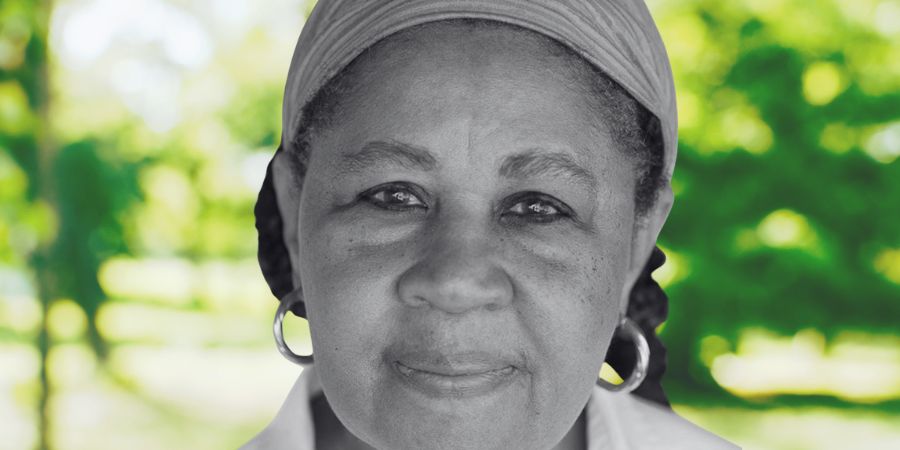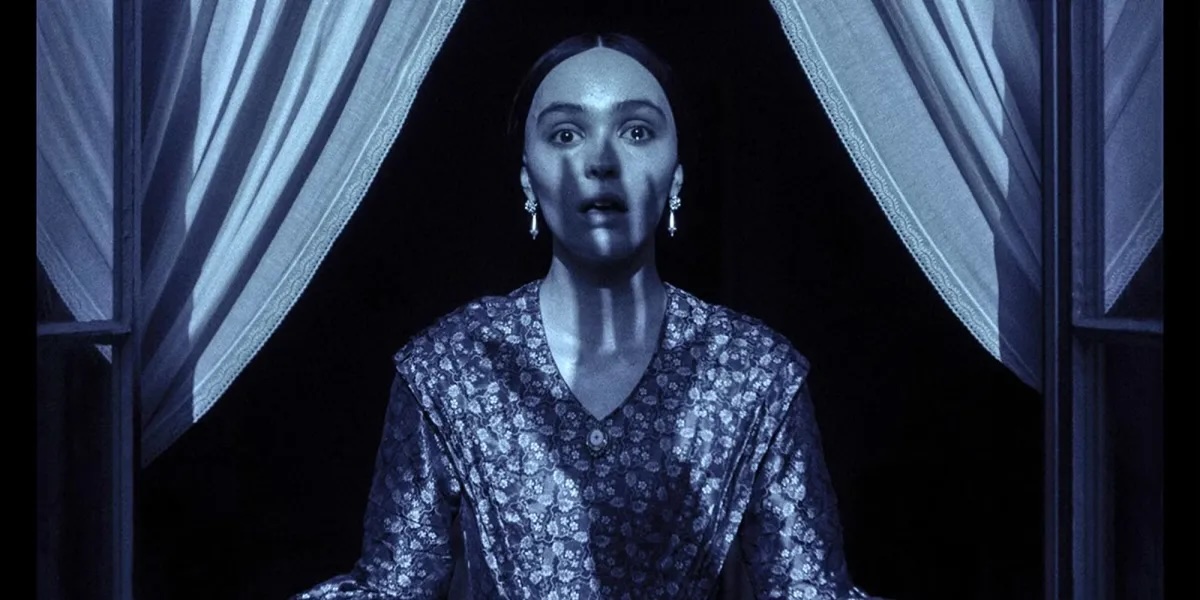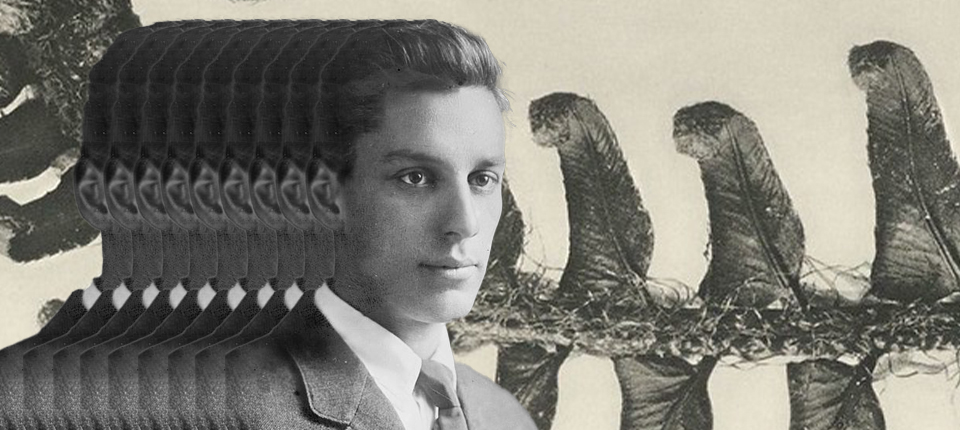As with get-rich-quick schemes, astrology could be turned to for those seeking to get ahead. While capturing the power of stellar rays in magic rings was still largely experimental throughout the medieval and early modern periods, many people felt on much firmer ground when using astrology to predict the future. At its simplest, astrological fortune-telling involved observing the heavens and interpreting the unusual phenomena that appeared in the sky. One of the most famous instances of this comes from the Anglo-Saxon Chronicle—an extraordinary set of histories recording yearly events in England up to the eleventh century—which describes the omens that preceded an infamous raid on the abbey of Lindisfarne in 793:
Article continues below
Here were dreadful forewarnings come over the land of Northumbria, and woefully terrified the people: these were amazing sheets of lightning and whirlwinds, and fiery dragons were seen flying in the sky. A great famine soon followed these signs, and shortly after in the same year, on the sixth day before the ides of January, the woeful inroads of heathen men destroyed God’s church in Lindisfarne island by fierce robbery and slaughter.
The weather and “fiery dragons” were interpreted as a sign sent from God that bad things were coming, probably as a punishment for human sin. It is sometimes suggested by modern historians that the description of fiery dragons refers to a comet, though as far as we know no comet had been passing through the sky that year (though earlier entries in the Anglo-Saxon Chronicle correctly record the appearance of a comet in the year 729). The Chronicle might have been describing some sort of meteorological event or perhaps the aurora borealis.
Many people felt on much firmer ground when using astrology to predict the future.
Although comets were recognized as a part of the workings of the universe, they were still thought to carry signs of things to come. These were rarely positive. The comet of 729 was interpreted by the Venerable Bede in his Ecclesiastical History as warning of the bloodshed that shortly followed, including a “terrible plague of Saracens [that] ravaged Gaul” and the deaths of both the “holy man of God, Ecgberth” and of Osric, King of Northumbria. When Halley’s Comet appeared around Easter 1066, it was similarly construed as presaging strife. The Bayeux Tapestry depicts people in England marveling at the heavenly body, and Duke William of Normandy taking advice on whether it was a sign that he should invade the kingdom.
All of these astronomical events were perceived as divine messages and they took on a further significance as the idea of stellar rays became more widespread. This concept—purporting that rays which emanated from the stars and planets had an impact on Earth—first reached Christian Europe in the thirteenth century through De radiis stellarum, a text attributed to the Baghdad philosopher al-Kindi (c. 801–873 ce). The rays that hit Earth could influence people’s lives, it claimed, but they could also affect the natural processes of our world.
When a comet appeared in the winter of 1664 and remained visible until the following year, therefore, it was seen not just as signaling the exceptionally virulent plague epidemic that was about to ravage London, but was thought to have actually caused it. The theory was that the magnetic attraction of the star might have drawn noxious vapors—miasma—up from the ground, making the air toxic and unbalancing people’s humoral make-up. In this sense, at least according to some thinkers, celestial portents were a particularly reliable means of divination because they were actually bringing the events about.
The complexity of the heavens allowed for much more insight than this, however. In the words of the thirteenth-century astronomer Guido Bonatti:
All things are known to the astrologer. All that has taken place in the past, all that will happen in the future—everything is revealed to him, since he knows the effects of the heavenly motions which have been, those which are, and those which will be, and since he knows at what time they will act, and what effects they ought to produce.
Guido was employed as an adviser to the Holy Roman Emperor Frederick II and, although his confidence is a little over-enthusiastic even for the period, it is a good example of how much potential some people saw in the stars. It is also important to remember that Guido was an exceptionally intelligent man with an excellent grasp of mathematics and the movement of planets. While modern readers may be skeptical of the claims he made, the logic that he applied in order to reach his conclusions was perfectly rational within the context of the knowledge available at the time.
Guido Bonatti’s illustrious employers, who included the ruler of Ravenna, Guido Novello da Polenta, and Guido I da Montefeltro, Lord of Urbino, certainly put Bonatti’s skills to the test. The information they sought invariably comprised predictions that had a practical application, such as when would be the best time to conduct negotiations with a rival power, or the outcome of a battle. It seems that Montefeltro in particular took Bonatti’s predictions very seriously and would follow his guidance on timings for everything, from when to put on armor, to when to mount his horse.
Though possibly apocryphal, one story claimed that Bonatti accurately calculated the outcome of the battle at Forlì in 1276, foretelling that Montefeltro would triumph over Giovanni d’Appia, the general who was heading the army of Pope Martin IV, but that he would be wounded in the process. Not only was Bonatti right, but Montefeltro was so confident about the prediction that he apparently sent out reports of the victory before the battle had even taken place.
Bonatti’s talents—and the prognostic value of astrology more generally—extended beyond the thirteenth century. His most famous text, the Liber Astronomicus, was translated into various languages, including Italian, English, German and French, ending up in various ducal and royal courts across Europe. One version, which also contains extracts from other astronomical works, was gifted to Henry VII of England around 1490.
Whether the king personally read the text, though, is difficult to say: it is in excellent condition even today and is largely clear of the telltale glosses, or marginal annotations, which normally signify that a book was meaningfully engaged with. But not reading such works does not mean that rulers therefore ignored astrologers, as is obvious from Henry VII’s grandchildren.
Elizabeth commissioned John Dee to create horoscopes for her in April 1555. At this time she was still only a princess, treading a difficult line between being the loyal younger sister to the incumbent Catholic monarch, Mary I—and heir apparent to the throne, should Mary die—and a Protestant figurehead for plots looking to unseat her sibling. It was a crucial time. In September 1554 it was declared that Mary was pregnant with the child of her husband, Prince Philip (soon to become Philip II of Spain).
Come June 1555, when the child was due to be born, there were thus four very real possibilities. If Mary and the infant survived, a Catholic succession would be secured and England would be brought into a closer alliance with Spain and the Habsburg Empire. In this scenario Elizabeth would be sidelined, dropping from the line of succession and becoming largely politically irrelevant. If Mary died in childbirth—not unlikely, given that she was thirty-eight years old and her medical experts perceived her life to be in real danger—but the child survived, new legislation passed early in the year stipulated that Philip would govern England in the child’s minority.
This was deeply unpopular among certain factions in England: Protestants were obviously not keen to see Catholicism triumph so completely, but some English Catholics also feared that England would never leave Habsburg control. In which case, there was the chance that a coup might be mounted, unseating the child monarch and replacing them with Elizabeth. If the child died at birth or Mary miscarried, the likelihood of another royal pregnancy seemed highly doubtful, meaning that Elizabeth would succeed her sister. The final scenario was that both Mary and the child would die, leaving Philip no foothold in England, and Elizabeth as de facto queen.
All of these options presented great risks for Elizabeth. She was in danger of assassination attempts by members of the Marian faction who wished to neutralize the Protestant threat she represented. Elizabeth also risked being implicated in plots against Mary, which would lead to her being executed for treason. Even if she got the happiest possible outcome and became queen, she needed time to shore up support in case the succession was contested. With so much at stake and with the political ground shifting like sand under her feet, is it any wonder Elizabeth commissioned horoscopes for Mary, Philip and herself?
These almanacs were the precursors of the daily horoscopes that still appear in the backs of magazines and newspapers today.
Dee probably cast a “questionary” horoscope, which, as the name suggests, was calculated to answer a particular query. Such horoscopes were extremely complicated but were intended to give detailed answers, unlike medical horoscopes, for example, which might only give a broad overview of one’s health profile and of particularly dangerous days for bloodletting. As far as I know, the horoscopes that Dee cast have not survived, though we do have records of the large-scale investigation initiated by Mary’s government, which was concerned that the predictions were part of a wider conspiracy. This perhaps indicates that the horoscopes foresaw a negative outcome for the royal couple and a positive one for Elizabeth.
Whether they did or not, this was not the last time Elizabeth would use such devices to predict her future. Dee was later commissioned to create a horoscope based on her coronation date, simultaneously confirming that the chosen day was an auspicious one and scrutinizing whether her reign would be successful. It seems likely that John Dee predicted a long and glorious rule for Elizabeth. Whether this was mere flattery or actually what he saw in the stars, in the end he turned out to be right.
Horoscopes were not only a tool for the aristocracy, though, especially not by the sixteenth century. Astrology was becoming increasingly accessible to all, through both printed almanacs and professional astrologers who would sell their services to anyone. Almanacs in particular were essential to the popularization of astrology. These cheaply printed texts, varying in length from one sheet to dozens of pages, plotted major events of the upcoming year. The kind of information contained within varied according to what publishers assumed would be of interest for their readers. They might include anything from tide times and interesting news from abroad, to helpful home-made remedies.
What underpinned almost all almanacs, though, were astrological predictions. At their simplest, this meant marking things like moon phases and solar eclipses, with commentaries about how these might affect the weather and thus when was the best time to sow crops. But they could also include detailed prognostications of the year ahead, including upcoming battles and their outcome, times of sickness, and bad or good days for business.
The historian Bernard Capp estimated that by 1660 roughly 400,000 almanacs were sold each year in England, meaning that one-third of all households would have had a copy. Given the culture of sharing literature and reading aloud in the seventeenth century, many people beyond the original buyers would have benefited from almanacs’ wisdom. Thus knowledge about astrology would have been widespread among the population of the time. These almanacs were the precursors of the daily horoscopes that still appear in the backs of magazines and newspapers today.
Professional astrologers were also on hand to answer people’s everyday questions, especially in major settlements like London and Paris. William Lilly is perhaps the most famous of astrologers active in the seventeenth century. According to his surviving case notes, between 1644 and 1666 he averaged almost 2,000 consultations a year. His clients were from all social classes and backgrounds—about one-third were female servants, but there were also several members of the nobility. They asked about everything from their fertility and marriage prospects to their future wealth, as well as more specific questions, such as where a prized possession had disappeared to.
On top of these regular services, Lilly, who sided with the Parliamentarians during the Civil War that wracked the British Isles in the 1640s, used his fortune-telling skills to advise the Roundhead armies. Some of his predictions were astonishingly accurate. In his 1645 almanac, Anglicus, Peace or No Peace, he calculated that “the tenth or eleventh of June may be casually unlucky to a Grandee of England [i.e. the king]…The Heavens frown on our Enemies a while…Let us totally unite, there’s great reason for it, and then if we fight, a victory steals upon us [the Parliamentarians].”
__________________________________

Excerpted from Cunning Folk: Life in the Era of Practical Magic by Tabitha Stanmore. Copyright © 2024. Available from Bloomsbury Publishing.

























































